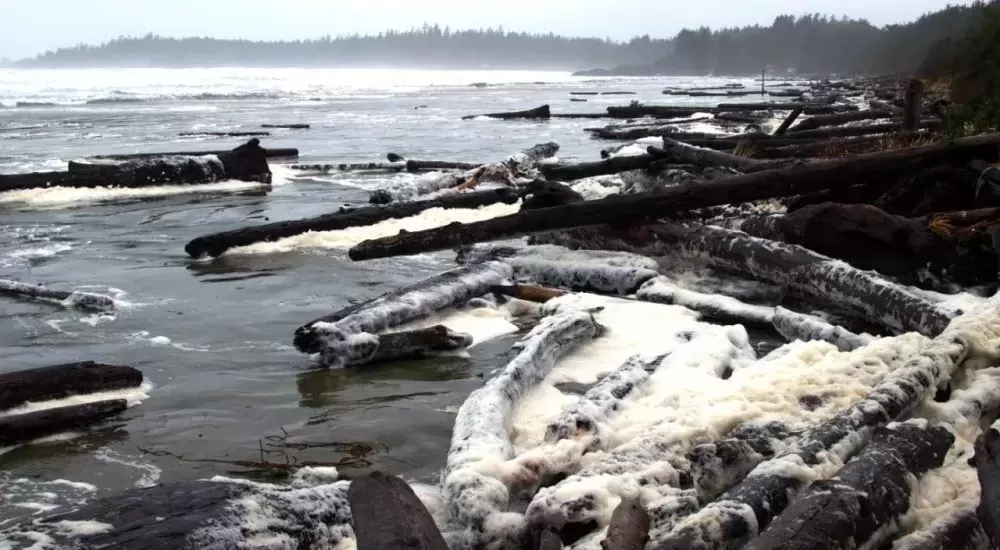The December storms of 2018 have gone down in history as the most damaging ever, according to BC Hydro.
For Vancouver Island, things got off to a rough start with heavy rain over the first weekend of November that caused turbidity in some community water reservoirs. In Hesquiaht the heavy rains caused road washouts and mudslides into Hesquiaht Lake, filling the basin with woody debris that has since been cleared out.
More heavy rain came in December followed by wind storms starting Dec. 8 that hit coastal British Columbia hard, including Vancouver Island and Haida Gwaii.
A series of wind storms followed, the biggest being the Dec. 20 thrust that leveled a section of forest near Cameron Lake.
High winds caused downed trees, cutting power to hundreds of thousands of BC Hydro customers. Ferry sailings were cancelled. Roads were closed due to fallen trees, mudslides or flooding.
The Dec. 20 storm slammed southern B.C. with high wind speeds coming from several directions, reaching up to 100 kilometres an hour in many places. The storm was preceded by days of heavy rain which saturated soils, causing instability for some trees.
In the aftermath more than 750,000 BC Hydro customers were left without power. On Vancouver Island about 80 percent of customers were without service due to the storm.
Wind speeds in Nanaimo that day hit 85 kilometres an hour, downing dozens of trees. In Tofino wind speeds measured 110 kilometres an hour and at Lennard Island Lighthouse, just off the coast between Tofino and Long Beach, wind speeds reached 144 kilometres an hour.
The Beaufort Wind Scale gauges wind in increments of zero to twelve, with zero being wind speed at less than 1 kilometre an hour; the effects being a flat calm sea and, on land, smoke that rises vertically. On the other end of the scale a Beaufort Grade Twelve is wind speed reaching 120 kilometres an hour and over – it is considered to be hurricane force. Most of Vancouver Island was at Beaufort Grade 11 violent storm range.
Despite the devastation, BC Hydro went to work immediately sending crews to make repairs. According to Mora Scott of BC Hydro, cleaning up after the storm required the biggest mobilization of people, equipment and materials in the utility's history. Nine hundred field personnel worked to repair more than 1,900 spans of wire, 390 power poles, 700 cross-arms and 230 transformers that were damaged as a result of the winds.
Personnel were also brought in from out of province to help get customers back on the grid. Most Islanders had power restored within 24 hours but for those living in less populated, remote areas of the island, the power was out for nearly a week, until after Christmas.
Ahousaht was without power for four days while Ditidaht went six days without power. People in remote Nuu-chah-nulth communities know from past experience that storms of this magnitude will mean days without electricity and, in some cases, isolation, where people cannot travel due to treacherous ocean conditions or due to flooded roads, as in Ditidaht’s case.
Some stayed in the communities to ride out the storms, others evacuated to cities to spend the holiday season with extended family or in hotel rooms.
When power was restored and evacuees were able to return home, many discovered that they lost freezer loads of meats, seafood and other perishables.
For BC Hydro, lessons have been learned from this year’s storm season. Part of the problem, they said, is that some customers encountered difficulty in reporting downed lines. The 911 emergency services operators were overwhelmed with calls during the storm.
BC Hydro is taking measures to address this and other difficulties identified in late December.







